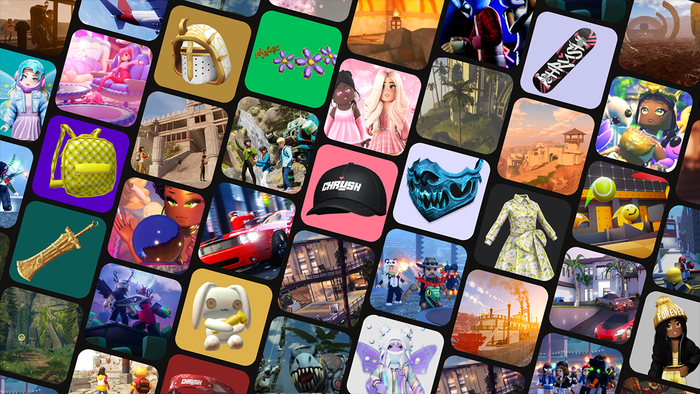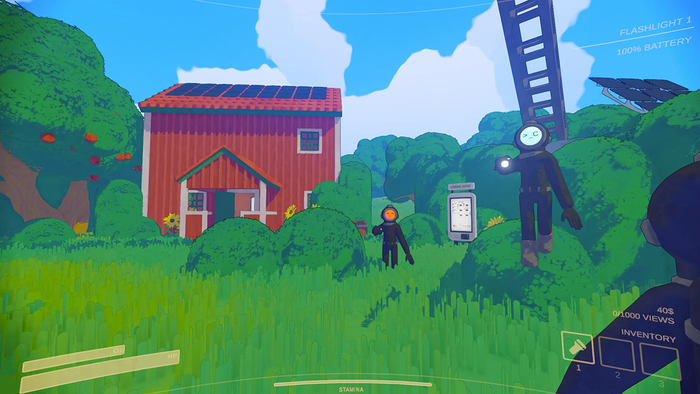Continuing interviews with the 2009 Independent Games Festival finalists, Gamasutra talks to co-developer Edmund McMillen about Coil -- an "experimental art game" that provides no instructions and presents two parallel stories -- nominated for the

[Gamasutra is talking to this year's Independent Games Festival finalists, this time interviewing Edmund McMillen about Coil -- an "experimental art game" that provides no instructions and presents two parallel stories -- nominated for the Innovation Award.] Cryptic Sea's prolific game designer Edmund McMillen has had his hand in a number of high-profile, thoughtful indie projects -- Aether, Gish, Blast Miner, Meat Boy (coming to WiiWare), and others -- all of which were recently compiled in This Is A Cry For Help, a disc collecting ten years-worth of his independently created games, comics and art. He collaborated with Komix Games founder and Austrian programmer Florian Himsl for Coil, McMillen's first autobiographical game. The Flash title, which features a haunting soundtrack and beautiful, unearthly illustrations, purposely offers no instructions, encouraging players to explore what they can and can't do in its minigames. Even the title screen and text interludes are puzzles, requiring an appropriate gesture from players before they can continue. We spoke with McMillen about Coil, nominated for the Innovation award at this year's Independent Games Festival (part of Think Services, as is this website). He discusses his motivation for having players work out each minigame's controls, some of the more strange interpretations he's heard for the odd title, and why he doesn't believe he could create Coil in the same way if he were to repeat the project. What kind of background do you have making games? Edmund McMillen: I've been making games independently for about five years now. My first and most well known game was Gish. Since Gish, I've accumulated a number of indie flash games under my belt that have made their way around the internet. I was also the character artist and animator for Braid. What sort of development tools did you use? EM: I use Flash for all my art, a little Photoshop here and there for edits. The games I work on with [Cryptic Sea's Alex Austin] all run off Alex's engines, which are made in C. All my Flash games are made in Flash. Could you share how you and Florian developed Coil's premise together, and what led you to break the game up into its different segments? EM: Well, I knew I wanted to break Coil up into seven segments. The original idea was to base it on the seven stages of death acceptance, or seven sins, but [I] moved away from those early on in development. I liked the number seven, though, so we stuck with it. For the gameplay (fetal story?), I wanted the player to play each stage of development from conception to death, so it had to be broken into the seven stages in order for that to work.  Why did you decide not to include any "instruction or clear direction" with Coil EM: Well the basic idea behind Coil is there are no instructions because there are no instructions in life. I think people get more out of experiencing something firsthand without help than having someone hold their hand through the process. That's the basic premise of what I was trying to do with Coil. I think having no instructions makes a game feel magical and is more rewarding to the player when they know they have figured something out for themselves. You've mentioned before that one of Coil's portions developed from a previous idea you had for a Nintendo DS game. Could you talk a little about that? EM: Oh yeah, I had this idea for a DS game based off an old flash game of mine called Viviparous Dumpling. I write down a lot of my ideas, and one of the ideas was a game where you stimulate sections of a creature's brain or organs to get them to move on the top screen. I pulled from that in the fifth stage of Coil. The second minigame, in which you have to separate the groups of colored balls -- it's really different from the other minigames, in that you're not controlling a being of any sort. What made you decide to include that portion? EM: I'm pretty sure that one was Florian's idea. He made a prototype where these balls would move away from your mouse, and it just seemed perfect for the cell splitting phase of fetal development. How did you come about developing the text that bookends each minigame? EM: I don't want to go that much into detail of what inspired every aspect of the text because its something everyone seems to have their own interpretation of, but the most important thing about the in-game text was to set a mood that put the player in an uncomfortable position. I felt that if I threw something at them that wasn't expected from a video game, they would be more open to the out-of-the-box gameplay I was about to throw at them. For the most part, the text was inspired by the death of my father, and my mother tending to my terminally ill grandmother. I wanted to explore how I felt about death, and the story was a way for me to kind of open up a dialogue with my audience and explore the feelings and ideas I was having at the time.
Why did you decide not to include any "instruction or clear direction" with Coil EM: Well the basic idea behind Coil is there are no instructions because there are no instructions in life. I think people get more out of experiencing something firsthand without help than having someone hold their hand through the process. That's the basic premise of what I was trying to do with Coil. I think having no instructions makes a game feel magical and is more rewarding to the player when they know they have figured something out for themselves. You've mentioned before that one of Coil's portions developed from a previous idea you had for a Nintendo DS game. Could you talk a little about that? EM: Oh yeah, I had this idea for a DS game based off an old flash game of mine called Viviparous Dumpling. I write down a lot of my ideas, and one of the ideas was a game where you stimulate sections of a creature's brain or organs to get them to move on the top screen. I pulled from that in the fifth stage of Coil. The second minigame, in which you have to separate the groups of colored balls -- it's really different from the other minigames, in that you're not controlling a being of any sort. What made you decide to include that portion? EM: I'm pretty sure that one was Florian's idea. He made a prototype where these balls would move away from your mouse, and it just seemed perfect for the cell splitting phase of fetal development. How did you come about developing the text that bookends each minigame? EM: I don't want to go that much into detail of what inspired every aspect of the text because its something everyone seems to have their own interpretation of, but the most important thing about the in-game text was to set a mood that put the player in an uncomfortable position. I felt that if I threw something at them that wasn't expected from a video game, they would be more open to the out-of-the-box gameplay I was about to throw at them. For the most part, the text was inspired by the death of my father, and my mother tending to my terminally ill grandmother. I wanted to explore how I felt about death, and the story was a way for me to kind of open up a dialogue with my audience and explore the feelings and ideas I was having at the time.  What are some of the more interesting interpretations you've heard or come across for particular elements/text? EM: Oh man, I've heard so many. The cool thing about it is that it seems like each person changes the story to fit some aspect of their own personal life. If you've been raped or abused, then I'm sure you might think the story is about rape. If abortion has affected your life, then you might feel the story is about that as well. I've also heard it's about incest, abusive relationships, Jesus, the afterlife, a serial killer and so on. Each person's interpretation of what's going on in Coil is very telling, and [it's] one of the things I find most interesting about the project. Coil really got the player thinking and talking about what they thought and how the game made them feel, and that is what I set out to do when I made it. If you don't mind explaining it, once you've completed the game, you're given the option to restart, and you're taken into the first minigame, in which you're controlling a sperm cell, except this time, it's missing its head. I hate to sound so slow-witted, but what's that all about? EM: It's an error that we left in because it kinda fit the theme. :) Were there any elements that you experimented with that just flat out didn't work with your vision? EM: Yeah, the seventh phase was actually a second conception phase when the "creatures" mate. We cut it because it felt weird and we just didn't have the time to get it working the way we wanted it to. So, really the seventh phase was originally the "credit roll," but again, things seemed to just work how we had them, so we shipped it as is. If you could start the project over again, what would you do differently? EM: I would give a better visual cue to the player when they solved the title screen puzzle. I didn't test Coil out on many people in-person, so I didn't think that people would accidentally solve it. The solution is used again for each text screen, it's a simple circle with the mouse, but any one who accidentally solved the title screen puzzle wouldn't realize this at all and get stuck. Really, though, if I started the project all over again today, it wouldn't at all be the same. I'm not in the same place mentally that I was when I made Coil so the game doesn't speak to me in the same way anymore. I still enjoy it and feel it's a valid piece of art, but for me, it's a reminder of how I felt at a really low point in my life, and its not something I want to throw myself back into at this point.
What are some of the more interesting interpretations you've heard or come across for particular elements/text? EM: Oh man, I've heard so many. The cool thing about it is that it seems like each person changes the story to fit some aspect of their own personal life. If you've been raped or abused, then I'm sure you might think the story is about rape. If abortion has affected your life, then you might feel the story is about that as well. I've also heard it's about incest, abusive relationships, Jesus, the afterlife, a serial killer and so on. Each person's interpretation of what's going on in Coil is very telling, and [it's] one of the things I find most interesting about the project. Coil really got the player thinking and talking about what they thought and how the game made them feel, and that is what I set out to do when I made it. If you don't mind explaining it, once you've completed the game, you're given the option to restart, and you're taken into the first minigame, in which you're controlling a sperm cell, except this time, it's missing its head. I hate to sound so slow-witted, but what's that all about? EM: It's an error that we left in because it kinda fit the theme. :) Were there any elements that you experimented with that just flat out didn't work with your vision? EM: Yeah, the seventh phase was actually a second conception phase when the "creatures" mate. We cut it because it felt weird and we just didn't have the time to get it working the way we wanted it to. So, really the seventh phase was originally the "credit roll," but again, things seemed to just work how we had them, so we shipped it as is. If you could start the project over again, what would you do differently? EM: I would give a better visual cue to the player when they solved the title screen puzzle. I didn't test Coil out on many people in-person, so I didn't think that people would accidentally solve it. The solution is used again for each text screen, it's a simple circle with the mouse, but any one who accidentally solved the title screen puzzle wouldn't realize this at all and get stuck. Really, though, if I started the project all over again today, it wouldn't at all be the same. I'm not in the same place mentally that I was when I made Coil so the game doesn't speak to me in the same way anymore. I still enjoy it and feel it's a valid piece of art, but for me, it's a reminder of how I felt at a really low point in my life, and its not something I want to throw myself back into at this point.  What do you think of the state of independent game development, and are there any other independent games out that you currently admire? EM: I enjoy how things are going. There have been a lot of games out there that have impressed me a lot. The greats aside, Braid and World of Goo, I'm really into Daniel Benmergui's work, he's one of few artists out there who are also exploring autobiographical game design, and I'm a big sucker for that kind of stuff. I'm also really into Cactus' work, he's the king of rapid prototyping, I really wish someone would give him a publishing deal already. I'm also down with anything by Metanet, Anna Anthropy, and The Behemoth. You've commented that you believe Aether, another excellent title that you created and that was entered into IGF, is a "far superior game" to Coil. Why do you think Coil might have been chosen as a finalist over Aether by IGF's judges? EM: I'll probably get a better idea of why Coil made it over Aether when we get our submission feedback. Personally, I think because Coil is more abstract, people might be tricked into thinking it's more innovative. Aether basically does the same thing as Coil but does it in a more accessible way. It sucks to say it, but because Coil comes off a bit more pretentious than Aether, it probably manipulated people into thinking it was either really good or they were dumb. And that kinda sucks if it's true, but maybe I'm wrong; maybe Coil is more innovative because it was the first autobiographical game I made? I dunno, I'm bad at reading minds.
What do you think of the state of independent game development, and are there any other independent games out that you currently admire? EM: I enjoy how things are going. There have been a lot of games out there that have impressed me a lot. The greats aside, Braid and World of Goo, I'm really into Daniel Benmergui's work, he's one of few artists out there who are also exploring autobiographical game design, and I'm a big sucker for that kind of stuff. I'm also really into Cactus' work, he's the king of rapid prototyping, I really wish someone would give him a publishing deal already. I'm also down with anything by Metanet, Anna Anthropy, and The Behemoth. You've commented that you believe Aether, another excellent title that you created and that was entered into IGF, is a "far superior game" to Coil. Why do you think Coil might have been chosen as a finalist over Aether by IGF's judges? EM: I'll probably get a better idea of why Coil made it over Aether when we get our submission feedback. Personally, I think because Coil is more abstract, people might be tricked into thinking it's more innovative. Aether basically does the same thing as Coil but does it in a more accessible way. It sucks to say it, but because Coil comes off a bit more pretentious than Aether, it probably manipulated people into thinking it was either really good or they were dumb. And that kinda sucks if it's true, but maybe I'm wrong; maybe Coil is more innovative because it was the first autobiographical game I made? I dunno, I'm bad at reading minds.
About the Author(s)
You May Also Like







